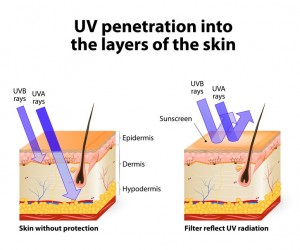As the warmer days start drawing to an end, sadly, so does your summer tan that I’m sure most of you spent a considerable amount of time on. Days are getting shorter, and like me, most of you are spending countless hours in class, studying and trying to keep a good social life, which makes it hard to keep up with your gorgeous glow. So one might ask, what do you do to combat your fading color? How do you keep this tan without causing your skin any excess damage from tanning beds? Simple, use the power of science and get a Spray Tan!
Aside from the horror stories you might have seen or heard, spray tanning has come a long way from looking orange or fake. It has become so advanced that many manufactures of solutions offer vegan, cruelty free, and even organic based products, they even go as far as using vegetables as their main ingredients. Although the utmost most important ingredient to get your skin that beautiful shade of bronze is called DHA. DHA or Dihydroxyacetone is a sugar based chemical that was discovered in the 1950’s. It works by chemically reacting with the keratin in your skin. It is topically applied through a spray or mist and reacts to the outer most layer of skin, however mostly these skin cells are already dead. Thought DHA is colorless, the reaction left afterwards is a natural golden or brown appearance. Unfortunately, since the color is applied topically to dead skin cells, the tanned appearance will generally only last around 7 days, which is normally how long it takes for you to shed them, making way for new skin growth.
In a recent article from the Skin cancer foundation, they had to rebut a Swedish study claiming that sun bathers actually lead longer lives than those who did not sunbath. Essentially, the skin cancer foundation discussed limitations within the study. Since the study did not consider results possibly being a false positive, nor did the study seem to support a complete randomized study, the skin cancer foundation claimed that it simply down played harmful risks associated with sun bathing properly and too much UV radiation. The Study unfortunately leaves readers as if they may not have to worry about sun protection or harmful UV radiation.

Image found here
Speaking of UV radiation, maybe you are just more prone to use the trusty tanning bed? You surely can’t get burnt now that you have a good base and you know what to expect, why mess up a good system? SPOILER ALERT! I hate to burst your bubble but the infamous “base tan” is a myth… Sure you may think a good burn starts the tanning process, whether its the tanning bed or sun, but it’s actually doing you more damage than it is helping your cause. Tanned skin is actually damaged skin! The UVA and UVB radiation are causing damage to your dermis (skin) which in means of further protection, changes to a darker color in order to stop more damage from occurring! So any type of unprotected UV radiation can damages your DNA on a cellular level. Sadly, though you may feel like a bronzed goddess, the after math of damaged DNA can lead to several health problems further down the road such as, wrinkles, loss of elasticity, sun spots and even different forms of cancer. So ask yourself this, is it really worth it?
Why not take full advantages of all that science has to offer and try spray tanning! You will benefit from it in several ways, not only will you look amazing for formals, social gatherings and mixers, but you can also avoid problems down the road.



Love this post; very relatable to college students. I want to be tan year round but do not want to use tanning beds all the time because of skin cancer. My parents would always tell me in high school that the UV rays can one day give me cancer and it would not be worth it in the long run. Spray tans are the perfect option! i enjoyed reading about the advantages of spray tanning and how it is not harmful to our skin with little to no risk. http://www.monroemonitor.com/2013/07/02/spray-tanning-a-healthier-alternative-to-tanning-beds-or-sun/ mentions more reasons why we should spray tan instead of killing our skin with tanning beds.